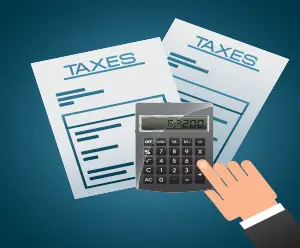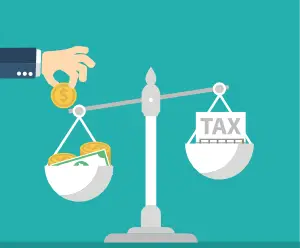Guaranteed Installment Agreement: The Guaranteed Installment Agreement is a straightforward option for taxpayers with a tax debt of $10,000 or less. Here’s how to initiate this process:
- Confirm Eligibility: Before considering this agreement, verify that your total tax debt, inclusive of penalties and interest, does not exceed $10,000. If it does, exploring other installment options may be necessary.
- File Required Returns: Ensure that all essential tax returns are up to date. The IRS will not consider an agreement if there are outstanding returns.
- Submit Form 9465: Complete Form 9465, the Installment Agreement Request, and attach it to your tax return. Whether filing electronically or by mail, indicating the monthly payment you can afford is crucial.
- Await IRS Confirmation: Upon receiving your request, the IRS will review and send a confirmation letter if approved. This letter outlines the terms, including the monthly payment amount and due date.
Streamlined Installment Agreement: Designed for taxpayers with a total tax debt of $50,000 or less, the Streamlined Installment Agreement provides a more flexible option. Here’s how to initiate this process:
- Confirm Eligibility: Ensure your total tax debt is within the $50,000 limit. If the debt exceeds this amount, exploring alternative installment agreements becomes necessary.
- File Required Returns: Similar to the Guaranteed Installment Agreement, ensure that all necessary tax returns are filed before proceeding with the application.
- Submit Form 9465 or Apply Online: Complete Form 9465 or opt for the IRS Online Payment Agreement tool for online applications. Provide the requested financial information during the process.
- Await IRS Confirmation: Following your application, the IRS will review the details and send a confirmation letter if approved. This letter outlines the terms of the agreement, specifying the monthly payment amount and due date.
Partial Payment Installment Agreement (PPIA): For those unable to pay the full amount within the statutory collection period, the Partial Payment Installment Agreement (PPIA) offers a viable solution. This agreement will help you to reduce the tax debt amountand pay a partial portion of it. Here’s how to initiate this process:
- Assess Eligibility: Confirm that paying the full amount within the statutory collection period is genuinely unattainable. If possible, explore other installment agreements.
- File Required Returns: Before initiating the application, ensure all tax returns are filed and up to date.
- Submit Form 433-F: Complete Form 433-F, the Collection Information Statement, providing detailed financial information, including income, expenses, assets, and liabilities.
- Await IRS Review: The IRS will carefully review your financial information and propose a monthly payment amount based on your ability to pay. If accepted, a confirmation letter detailing the agreement terms will be issued.
Non-Streamlined Installment Agreement: For taxpayers with a tax debt exceeding $50,000, the Non-Streamlined Installment Agreement offers a more complex but feasible option. Here’s how to obtain it:
- Confirm Eligibility: Verify that your total tax debt exceeds $50,000. If not, consider other installment agreement options.
- File Required Returns: Complete any outstanding tax returns before initiating the application process.
- Submit Form 433-F: Similar to the PPIA, complete Form 433-F, providing detailed financial information about income, expenses, assets, and liabilities.
- Await IRS Review: The IRS will conduct a thorough review of your financial details and determine a monthly payment amount based on your financial capacity. If accepted, they will send a confirmation letter outlining the terms.
Direct Debit Installment Agreement (DDIA): For added convenience, taxpayers can opt for a Direct Debit Installment Agreement (DDIA). Here’s a guide on how to obtain this agreement:
- Choose Eligible Agreement: Choose an installment agreement type (e.g., guaranteed, streamlined) that allows for direct debit.
- Submit Form 9465 or Apply Online: Complete Form 9465 or apply online through the IRS Online Payment Agreement tool, specifying your desire for a Direct Debit Installment Agreement during the application.
- Set Up Direct Debit: Provide your bank account information for automatic debits. Opting for direct debit may reduce setup fees.
- Await IRS Confirmation: Upon approval, the IRS will confirm the agreement and provide details about the direct debit schedule. Ensure that your bank account has sufficient funds to cover the automatic payments.
Dealing with Missed Payments and Defaults: Missed payments can lead to default on your installment agreement. The IRS provides a grace period of 30 days to make up any missed payments. If payments are not reinstated within this period, the IRS has the right to terminate the agreement. You will receive a Notice of Intent to Levy, and if action is not taken within 90 days, the IRS can pursue collection actions, including liens, wage garnishment, or other measures. Reinstating the agreement is possible by either paying the total outstanding debt or filing Form 9423 for an appeal.
Fees Associated with Installment Agreements:
Short-Term Installment Agreement: $0 setup fee.
Long-Term Installment Agreement (Direct Debit): $31 setup fee if applying online, $107 if applying by mail, phone, or in person using Form 9465.
Long-Term Installment Agreement (Standard): $130 setup fee if applying online, $225 if applying by mail, phone, or in person using Form 9465.
Modification/Reinstatement Fee: $10 if applying online, $89 if applying by mail, phone, or in person.
Debit or Credit Card Processing Fee: $2 to $4 for a debit card, 2% of the payment for a credit card.
Because IRS installment agreements fees are subject to change, we recommend that you call the IRS at 800-829-1040 or visit the IRS website.
Impact on Credit Score: Entering into an IRS installment agreement does not directly impact your credit score.
Additional Information and Considerations
:
Reviewing Financial Capacity: Before entering into an installment agreement, it’s crucial to thoroughly assess your financial capacity. Consider your monthly income, necessary living expenses, outstanding debts, and any foreseeable changes in your financial situation. This assessment ensures that the proposed monthly payment is realistic and sustainable over the agreed-upon period.
Negotiating Terms: In certain situations, taxpayers may find it challenging to meet the standard terms proposed by the IRS. It’s important to know that you have the option to negotiate the terms of your installment agreement. This could involve adjusting the monthly payment amount, extending the duration of the agreement, or modifying other terms to better align with your financial capabilities.
Interest, Penalties, and Fees: While an installment agreement provides a structured approach to settling your tax debt, it’s essential to acknowledge that interest and penalties will continue to accrue until the balance is fully paid. Understanding the specific breakdown of these charges and how they apply to your situation is key to developing a comprehensive repayment strategy.
Applying for Multiple Tax Years: If you have outstanding tax liabilities for multiple years, the IRS allows you to consolidate them into a single installment agreement. This simplifies the repayment process and ensures a more streamlined approach to settling your overall tax debt. When applying for an agreement covering multiple tax years, make sure to provide accurate information for each period.
Reassessing Your Agreement: Life circumstances can change, affecting your financial situation. If you encounter difficulties in maintaining the agreed-upon payments, it’s crucial to proactively reassess your installment agreement. The IRS provides options for modifying or adjusting existing agreements to better suit your current financial circumstances.
Professional Guidance: Navigating the complexities of tax debt and installment agreements can be challenging. Seeking professional guidance from a tax advisor, accountant, or tax attorney can provide valuable insights into your specific situation. These professionals can help you explore all available options, ensure accurate completion of required forms, and offer advice on the most favorable terms for your installment agreement.
Understanding the Collection Process: In cases where taxpayers default on their installment agreements, it’s essential to comprehend the IRS collection process. Upon default, the IRS issues a Notice of Intent to Levy, informing the taxpayer of the potential consequences, including liens, wage garnishment, or other collection measures. Familiarize yourself with these processes to take prompt action in the event of missed payments.
Exploring Alternatives: An installment agreement may not be the only solution for resolving tax debt. Depending on your financial circumstances, you might explore other alternatives, such as an Offer in Compromise (OIC) or currently not collectible (CNC) status. Understanding these alternatives and their eligibility criteria can help you make an informed decision about the most suitable approach for your situation.
Impact on Assets: While installment agreements primarily focus on monthly payments, it’s essential to be aware of potential impacts on assets. Certain agreements may require a comprehensive review of your financial details, including assets and liabilities. Understanding how these factors influence the terms of your agreement ensures a transparent and informed negotiation process.
Important Tip: Before submitting an application for any of the IRS's tax programs, you should make sure that you are in complete compliance and carefully review this information. - Click Here for compliance
Conclusion: Successfully navigating IRS installment agreements involves a combination of understanding eligibility criteria, diligently following application steps, and considering the broader financial implications. Whether opting for a Guaranteed Installment Agreement, Streamlined Installment Agreement, Partial Payment Installment Agreement (PPIA), Non-Streamlined Installment Agreement, or a Direct Debit Installment AgreementBy adhering to the outlined steps, negotiating terms when necessary, and staying proactive in reassessing your financial situation, you can establish a manageable path towards resolving your tax debt.



Ask me any questions...












How may I help you with your tax issue?